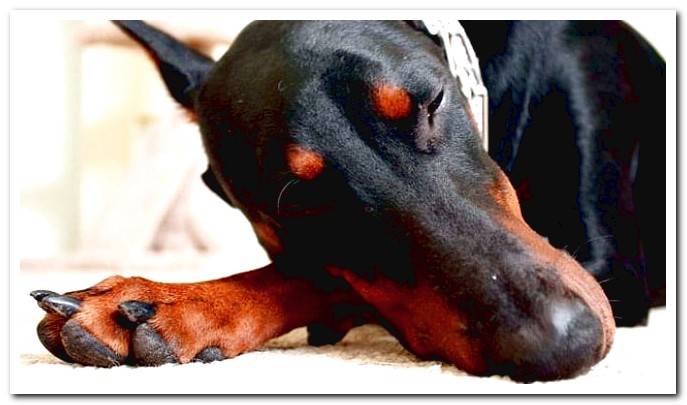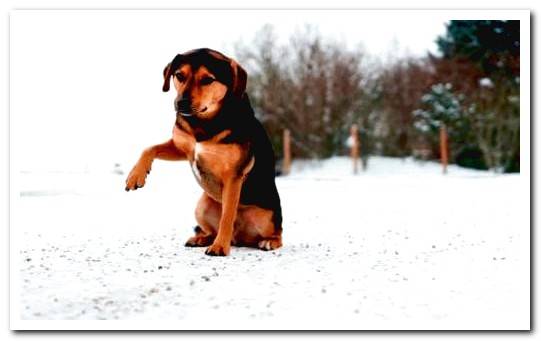
The word “wobbler” in English refers to an unstable movement, such as the wobbly walk that dogs with cervical spondylomyelopathy can have. For this reason, this chronic progressive disease is also known as Wobbler syndrome.
Do you want to know how this condition can affect your furry companion? Wondering if Wobbler Syndrome has a cure? Both are very frequent doubts. For this reason, in this Dogsis article, we will talk in detail about this pathology, which some large and giant breed dogs suffer especially.
After talking about the symptoms and treatment options, we will give some tips that can help you improve the quality of life of a dog with this disease.
Index of contents
- 1 What is Wobbler Syndrome?
- 2 Main symptoms of Wobbler syndrome
- 3 Treatment for dogs with Wobbler Syndrome
- 4 Recommended care
What is Wobbler Syndrome?
Wobbler syndrome is a disease of the cervical spine involving the caudal vertebrae and intervertebral discs. This disease causes the spinal cord to compress, so signs of pain and neurological type appear.
Slipping of the intervertebral disc it is more common in doberman pinschers, while bone malformations are more likely in giant dogs. In general, males have a higher incidence of this disease than females. In any case, the races most predisposed to suffer it are:
- Doberman pinscher
- Doberman
- Dalmatian
- Rottweiler
- Great dane
- Mastiff
- Irish Wolfhound
- Basset hound
However, similar cases have also occurred in small breed dogs. The causes can be diverse. Genetics, excessively fast growth or diet are influencing factors. How can we intuit that a dog has this problem? Through the obvious symptoms that this disease shows.

Main symptoms of Wobbler syndrome
The most common symptoms of the Syndrome Wobbler are the following:
- The dog walks strangely, like wobbly.
- He walks with short steps and without resting well on the ground.
- You have stiffness or pain in your neck.
- He appears weak and appears to have no strength in the forelimbs.
- You have lost muscle mass in some areas.
- Her nails are worn.
- You have trouble getting up when lying down.
- Limps.
- Shows greater aggressiveness due to pain.
In the most extreme cases, the dog cannot walk and has partial or complete paralysis. If these circumstances occur it is important that you take the dog to the vet as soon as possible so that he can carry out the appropriate tests.
These will typically include a complete blood count and urinalysis, plus MRIs and X-rays to see what condition the dog’s spine is in and rule out other inflammatory disorders or diseases.

Treatment for dogs with Wobbler Syndrome
If the diagnosis of Wobbler Syndrome is confirmed, the professional should propose an appropriate treatment depending on where the compression is located in the spine and its severity.
To treat Wobbler Syndrome, surgery is usually the most recommended. In fact, 80% of cases find improvement. With that, what is sought is to decompress and stabilize the spine of the dog, something that can be done through various surgical techniques.
In the event that such an intervention cannot be performed, an outpatient treatment should be chosen, with anti-inflammatory drugs and muscle relaxants prescribed by a professional. In some cases, acupuncture may be an option for pain control, although these procedures only offer temporary relief.
Recommended care
When caring for a dog with Wobbler Syndrome there are several tips that can help us. The main ones are:
- If the dog can’t walk, make sure it has a nice soft surface to rest on.
- Be aware of it and try to change its position every few hours to avoid ulcers.
- Use body harnesses and not collars, as they compress the spinal structure.
- Make sure that their diet is adequate. You may need a diet with less protein, calcium, and calories.
- The dog must undergo therapy, with exercises that help him not to lose muscle mass or to not have problems with atrophy or fusion of bones.
- You should not exceed your physical activity, or run or jump during the two or three months after the operation.
- You need to make sure that his skin stays dry to avoid wounding.
Finally, don’t forget to take it to all the scheduled check-ups with the vet to follow up and avoid complications.
